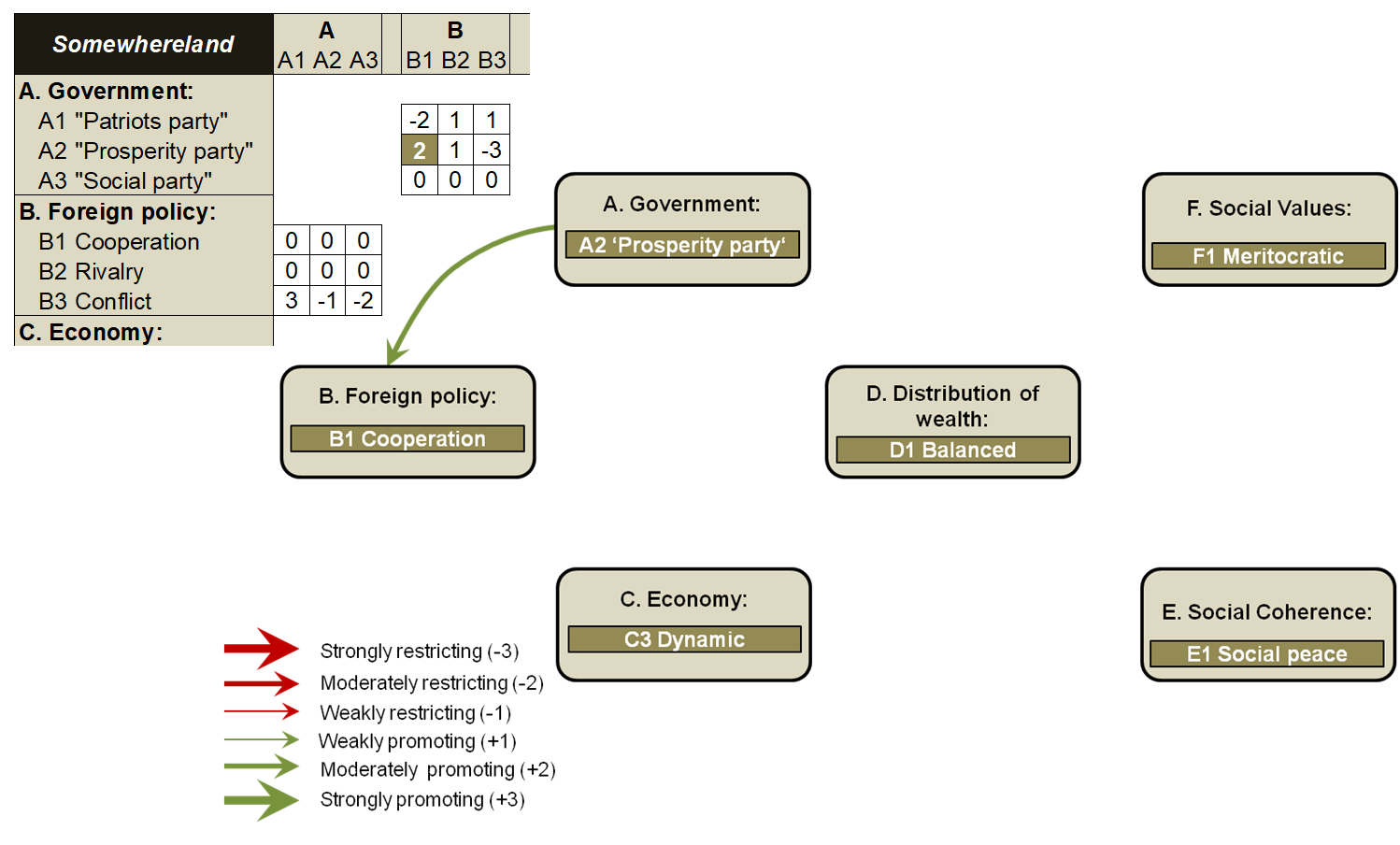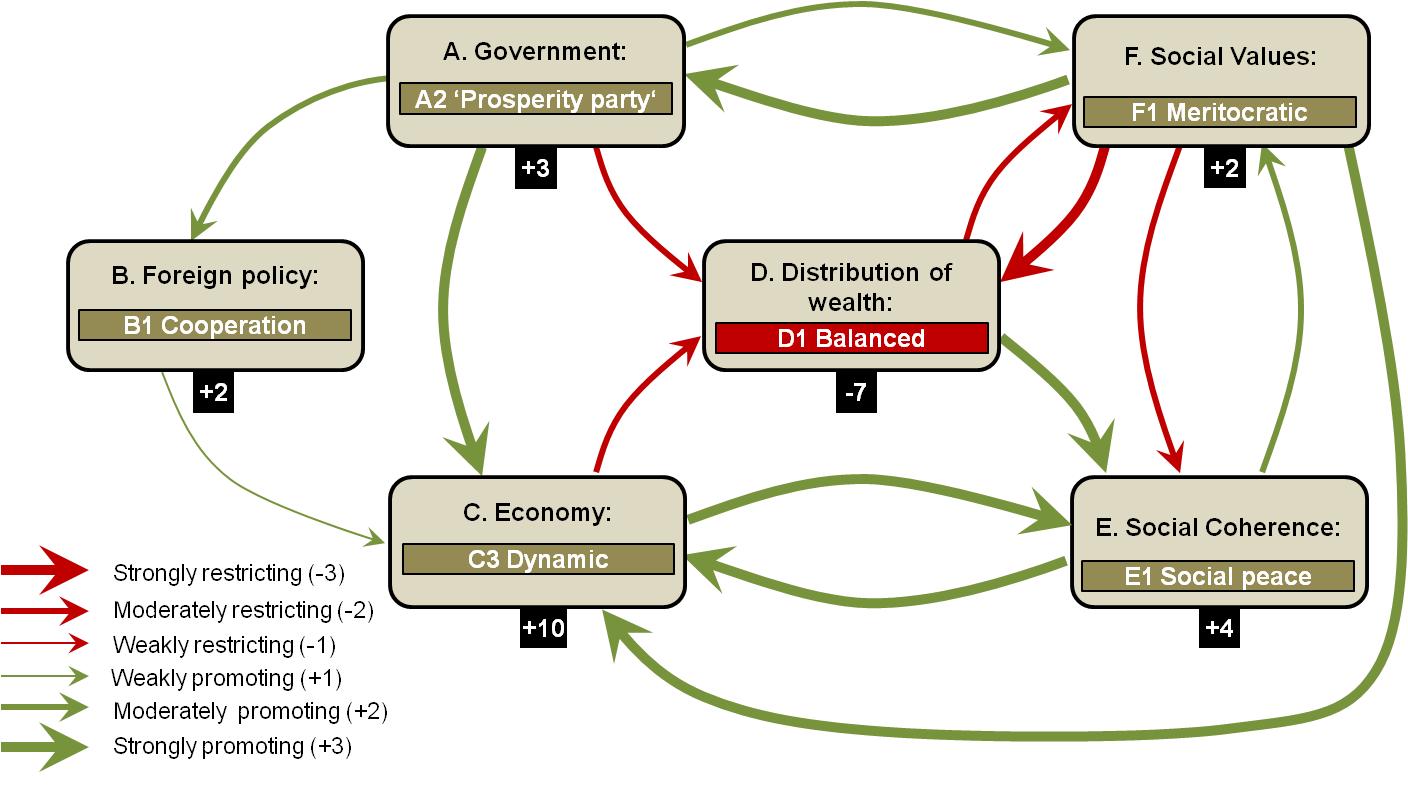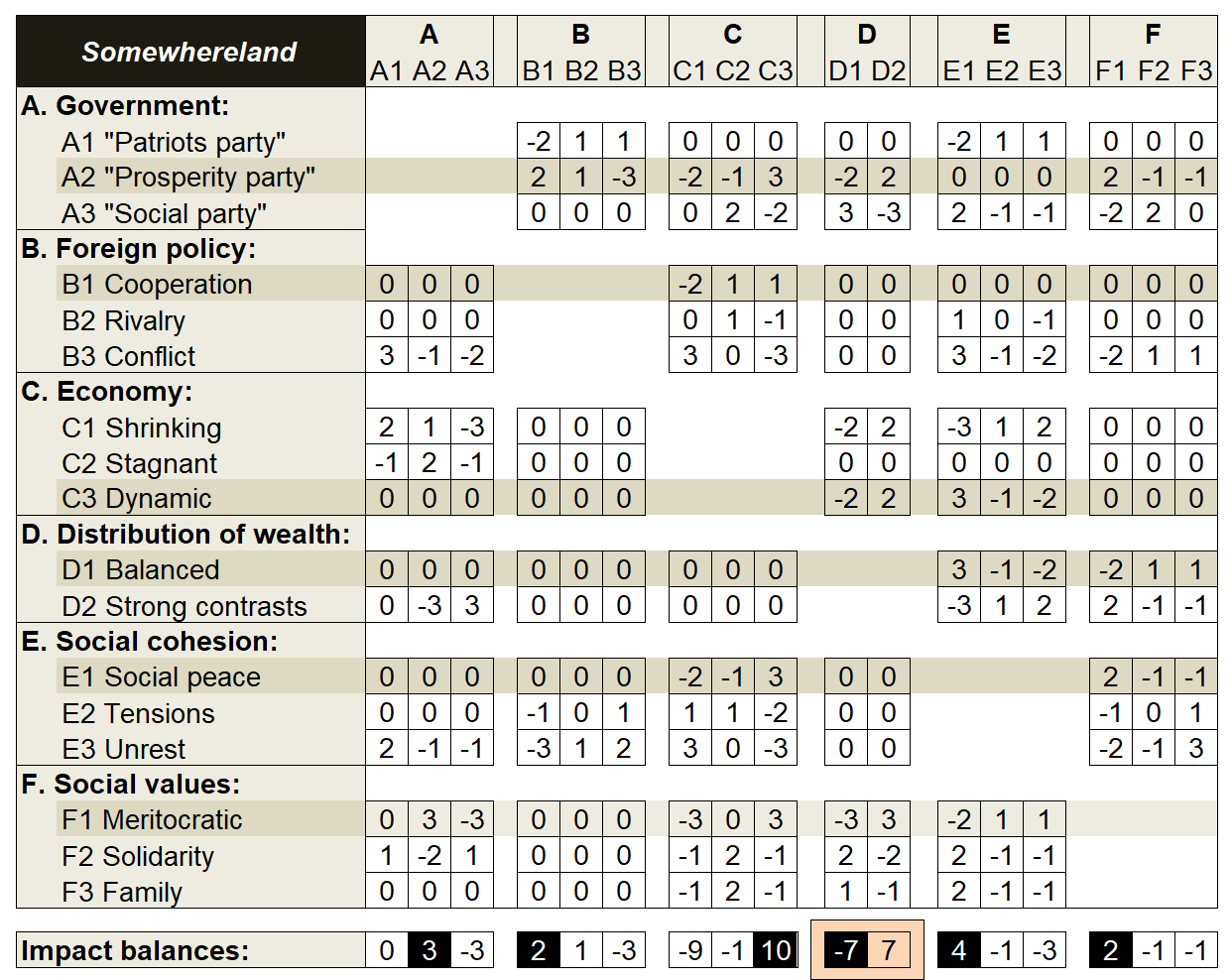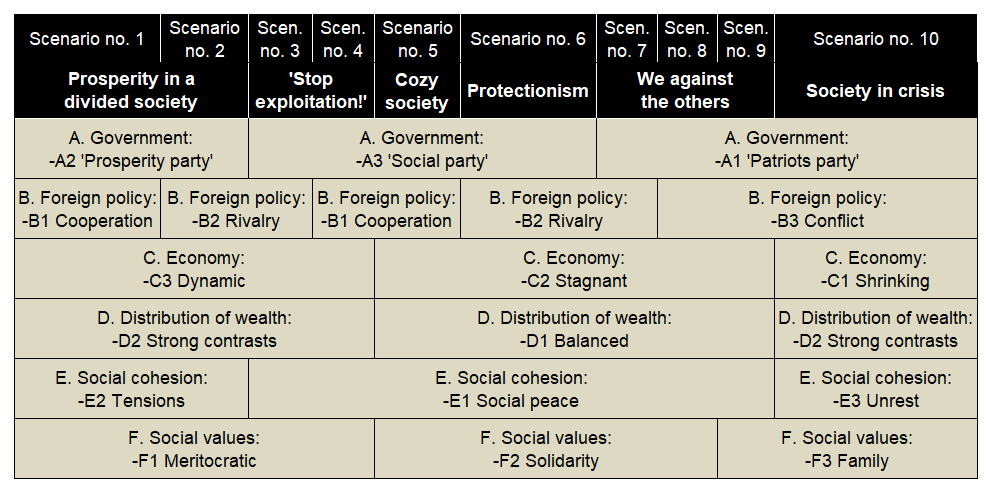| Step I: Descriptors |
| Step II: Variants |
| Step III: Cross-Impact-Matrix |
| Step IV: Scenario construction |
| Video-Tutorials |
CIB Analysis - Step-by-Step
Step IV: Scenario construction
The 16 variants of the 6 Somewhereland descriptors can be combined into a total of 486 scenarios by selecting one of the 2-3 variants for each descriptor. However, the vast majority of these scenarios are not consistent with the interdependencies formulated in the cross-impact matrix. The inconsistency of a scenario can be discovered by looking up the influence relationships between the active variants of a scenario in the cross-impact matrix. As an example, the consistency of the scenario shown below is examined.| A. Government: | A2 'Prosperity party' |
| B. Foreign policy: | B1 Cooperation |
| C. Economy: | C3 Dynamic |
| D. Distribution of wealth: | D1 Balanced |
| E. Social coherence: | E1 Social peace |
| F. Social values: | F1 Meritocratic |
For instance, the cross-impact value of the matrix cell A2 → B1 is +2. This means that scenario element [A2 Government: 'Prosperity party'] exerts a medium strength promoting influence on scenario element [B1 Foreign policy: Cooperation].

In the same way, all influence relationships between the scenario elements can be taken from the cross-impact matrix. For the scenario listed above, this results in a visualization of the influence relationships shown below.

In the CIB, scenario elements are considered to be well-founded if they are influenced by numerous, preferably strongly promoting influences (green arrows) and at the same time only a few, preferably weak inhibiting influences act on the element (red arrows). In other words, the sum of the influence values of all arrows pointing to a scenario element should be as high as possible. These 'impact sums' are shown in the black boxes below the scenario elements in the figure above.
It follows from this consideration that the scenario element [C3 Economy: Dynamic] is very credible in this scenario (high impact score), but the scenario element [D1 Wealth distribution: Balanced] is conspicuously ill-founded in the context of the other developments in this scenario (low impact score).
In the CIB, consistent scenarios are characterized by the fact that the impact sums for all scenario elements are as high as possible. They are as high as possible if an exchange of the selected variant would not lead to a further increase in the impact sum for any descriptor (Nash equilibrium). Whether this is fulfilled in a scenario can be determined by a simple calculation using the cross-impact matrix. To do this, the rows of all active variants of the scenario are marked and the marked rows are added up to the 'impact balances'.

The consistency condition is fulfilled for all descriptors where the impact sum of the active variant (inverse printing) is not exceeded by the impact sum of another variant of the same descriptor. This is fulfilled in the example for five of the six descriptors, but not for descriptor [D. Distribution of wealth]. The examined scenario must therefore be rejected as inconsistent. Not all impact sums are as high as possible because descriptor D is not chosen in the way that the other components of the scenario suggest.
Of the 486 possible scenarios of Somewhereland, only 10 scenarios pass the CIB consistency test. Each of these scenarios consists of a coherent combination of descriptor developments. Together they cover a wide range of possible futures for Somewhereland.

Although the CIB consistency test is simple enough to be performed with paper and a pencil, the evaluation of a common sized cross-impact matrix requires that this test be repeated very often, which requires the application of software. The freely available CIB software ScenarioWizard can be used for this purpose.
For a further introduction to the CIB method, you can watch the CIB video tutorials. A detailed method description can be found in: W. Weimer-Jehle (2023): Cross-Impact Balances (CIB) for Scenario Analysis - Fundamentals and Implementation. Springer Berlin, Heidelberg, New-York. DOI: 10.1007/978-3-031-27230-1. >>